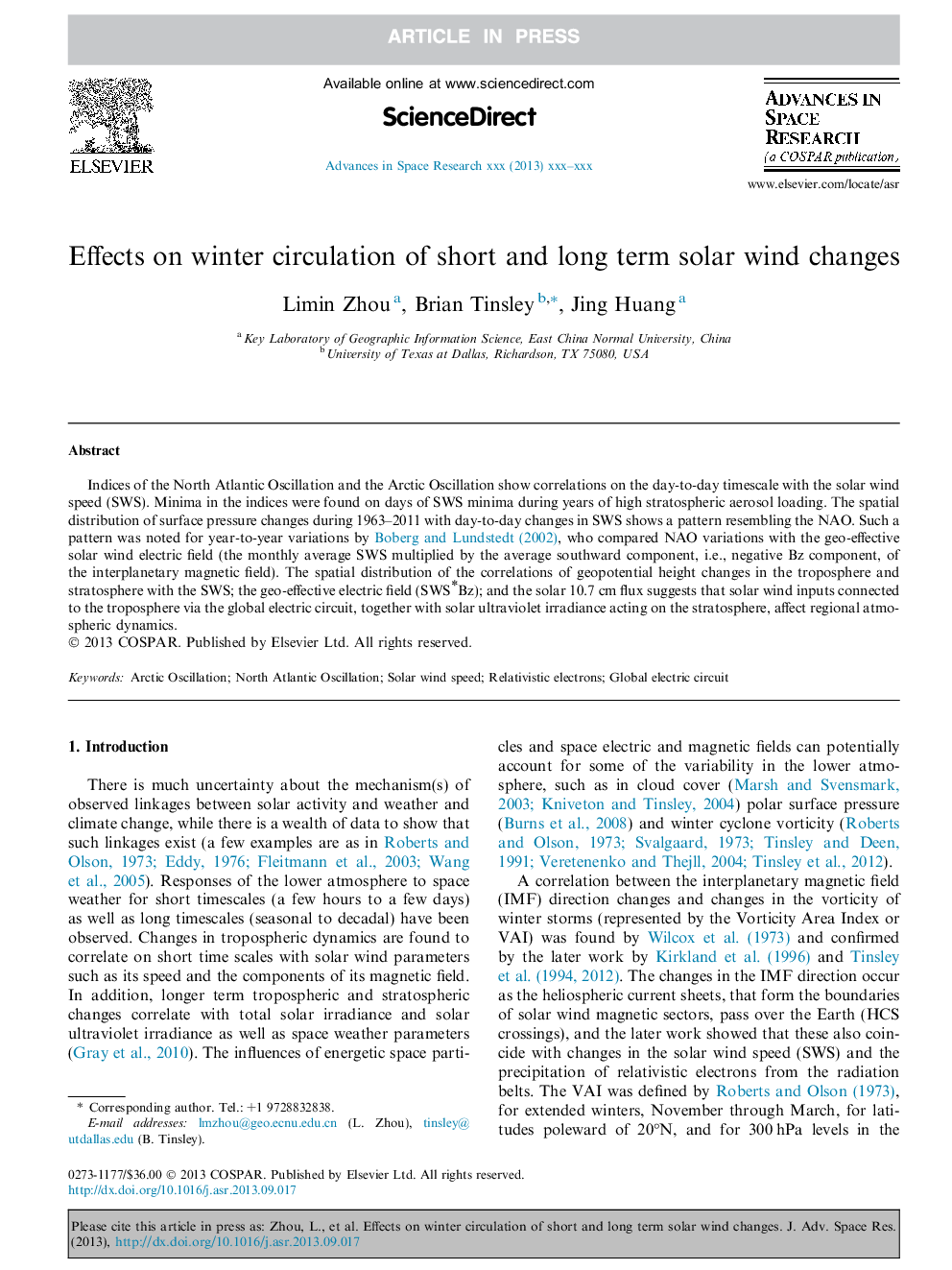| Article ID | Journal | Published Year | Pages | File Type |
|---|---|---|---|---|
| 1764422 | Advances in Space Research | 2014 | 13 Pages |
Abstract
Indices of the North Atlantic Oscillation and the Arctic Oscillation show correlations on the day-to-day timescale with the solar wind speed (SWS). Minima in the indices were found on days of SWS minima during years of high stratospheric aerosol loading. The spatial distribution of surface pressure changes during 1963-2011 with day-to-day changes in SWS shows a pattern resembling the NAO. Such a pattern was noted for year-to-year variations by Boberg and Lundstedt (2002), who compared NAO variations with the geo-effective solar wind electric field (the monthly average SWS multiplied by the average southward component, i.e., negative Bz component, of the interplanetary magnetic field). The spatial distribution of the correlations of geopotential height changes in the troposphere and stratosphere with the SWS; the geo-effective electric field (SWSâBz); and the solar 10.7Â cm flux suggests that solar wind inputs connected to the troposphere via the global electric circuit, together with solar ultraviolet irradiance acting on the stratosphere, affect regional atmospheric dynamics.
Related Topics
Physical Sciences and Engineering
Earth and Planetary Sciences
Space and Planetary Science
Authors
Limin Zhou, Brian Tinsley, Jing Huang,
